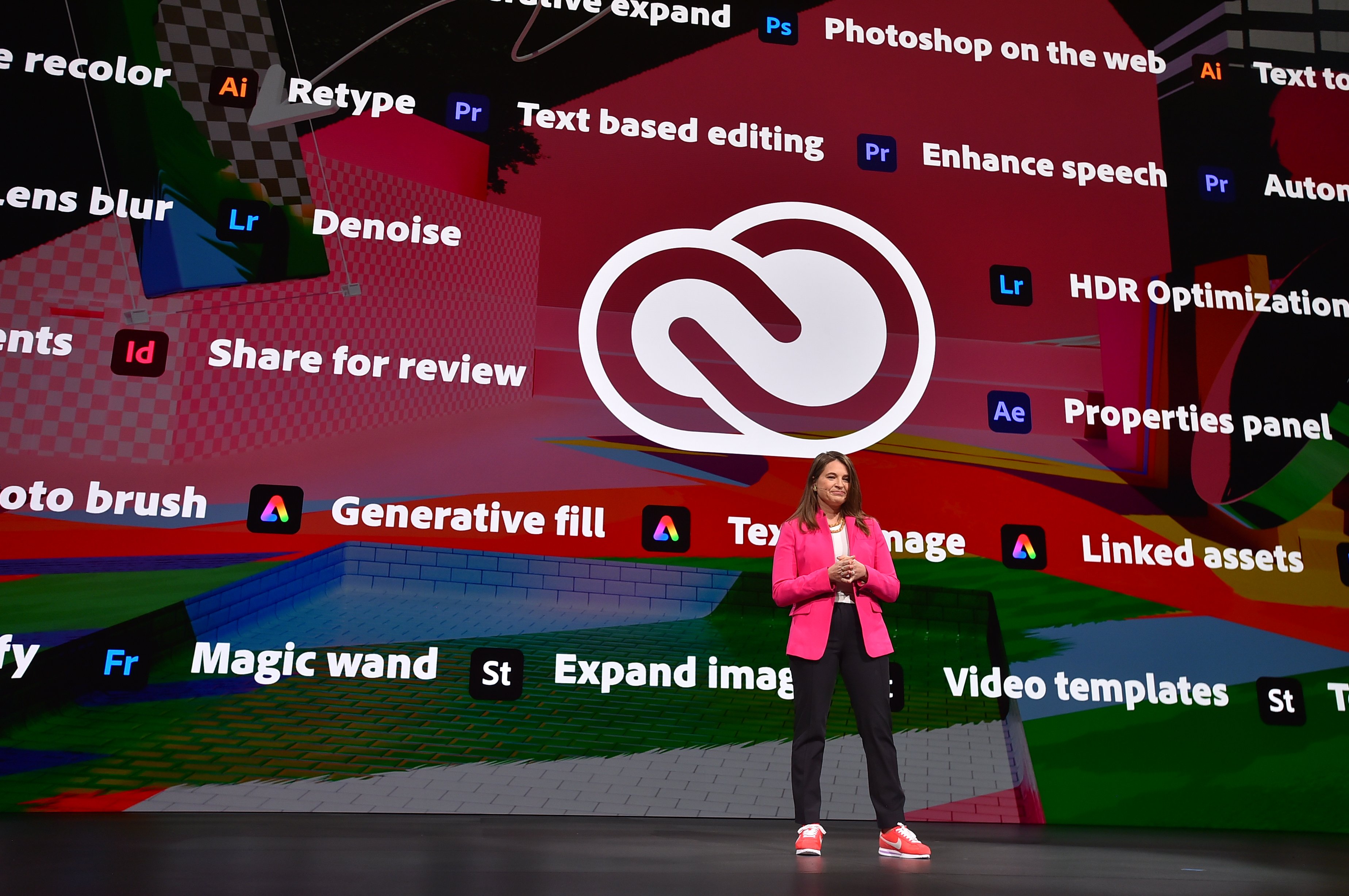Adobe Systems (ADBE 0.71%) is most known for its suite of multimedia and creativity software, including Photoshop, Illustrator, and InDesign. But in recent years, the company has been expanding into new areas and creating an enterprise marketing software suite, mostly through acquisitions. Since the start of 2017, Adobe has spent nearly $7 billion on just three cornerstone acquisitions in this enterprise software push.
Will this acquisition-led growth strategy pay off?
Deals, deals, deals
The company has a long history of using acquisitions to drive growth. In 1994, it acquired Aldus, which provided it with the PageMaker design software and video editing software After Effects -- still a popular application.

Image source: Getty Images.
In 2005, Adobe acquired Macromedia, which gave it web design software Flash and Dreamweaver. These acquired packages helped build the foundation of Adobe's extremely formidable offerings, which dominate the market for creative software today.
So it shouldn't be a surprise to see Adobe returning to its old playbook while building its enterprise marketing software franchise. The company has been aggressively adding new businesses to its mix since 2017.
| Acquired Business | Year | Price | Description |
|---|---|---|---|
| TubeMogul | 2017 | $560 million | Video advertising platform, enabling brands and marketers to buy advertisements across desktop, mobile, streaming, and linear TV |
| Magento | 2018 | $1.64 billion | An e-commerce hosting platform |
| Marketo | 2018 | $4.7 billion | Business-to-business (B2B) marketing software |
Data source: Adobe.
In 2017, Adobe acquired TubeMogul, a publicly traded digital advertising company that enabled brands and marketers to buy video ads across any format (digital or analog). At the time it announced the deal, Adobe already had a strong marketing cloud offering to help marketers measure the size of their audience and buy ads in other formats. The TubeMogul deal strengthened its capabilities in video and brought in new customers who were using TubeMogul but weren't as familiar with Adobe's other capabilities.
Adobe followed up by acquiring Magento Commerce, a platform that helps businesses sell goods and services to consumers and other businesses through order management, payment solutions, and analytics. It is free to use and primarily makes money by selling premium features and themes.
Most recently, Adobe acquired Marketo, which has a suite of tools enabling marketers to capture, store, and leverage client data for email marketing, digital advertising, personalized advertising, and customer analytics. It does this through software applications embedded on a company's website and digital media platforms. These tools give B2B marketers enhanced capabilities traditionally used for consumer marketing but which are also effective with business customers.
With these three marketing software businesses, Adobe has extended its reach into more markets and with more capabilities. The company is able to cross-sell its new products to existing customers and bundle solutions to enhance the value of its marketing software -- similar to the strategy that it used to build its creative software franchise. And based on its traction in growing its enterprise customer base, it appears to be working.
The big-picture opportunity
At the end of the day, there is limited business synergy between the creative software segment and the marketing software segment, but Adobe's management team has a strong ability to build and run software assets. And it has identified a huge opportunity in the marketing space that can be addressed with a suite of products sold as a single subscription, where they have traditionally been sold as a patchwork of smaller solutions by a fragmented base of vendors.
On a recent investor call, CEO Shantanu Narayen said:
"As we talked about upfront and as we think about the Experience Cloud, it really is being built as the most comprehensive and integrated and actionable platform on the market. And what that means is, we do think there will be unique capabilities that we'll provide all the way from the moment you see your first ad ... through where you're transacting and purchasing a product."
It makes sense for Adobe to position itself as a one-stop shop for marketing software. When faced with the proposition of dealing with many outsourced vendors versus fewer outsourced vendors, most enterprise customers would rather deal with fewer. And Adobe's ability to bundle its software can deliver these solutions at a lower cost than buying them individually.
The key question many Adobe shareholders have is whether the tech company will succeed in tackling so many different end markets and competing against other large software companies like Salesforce.com. Based on Adobe's long track record of delivering growth and shareholder returns, we can probably give it the benefit of the doubt that it will be successful.






